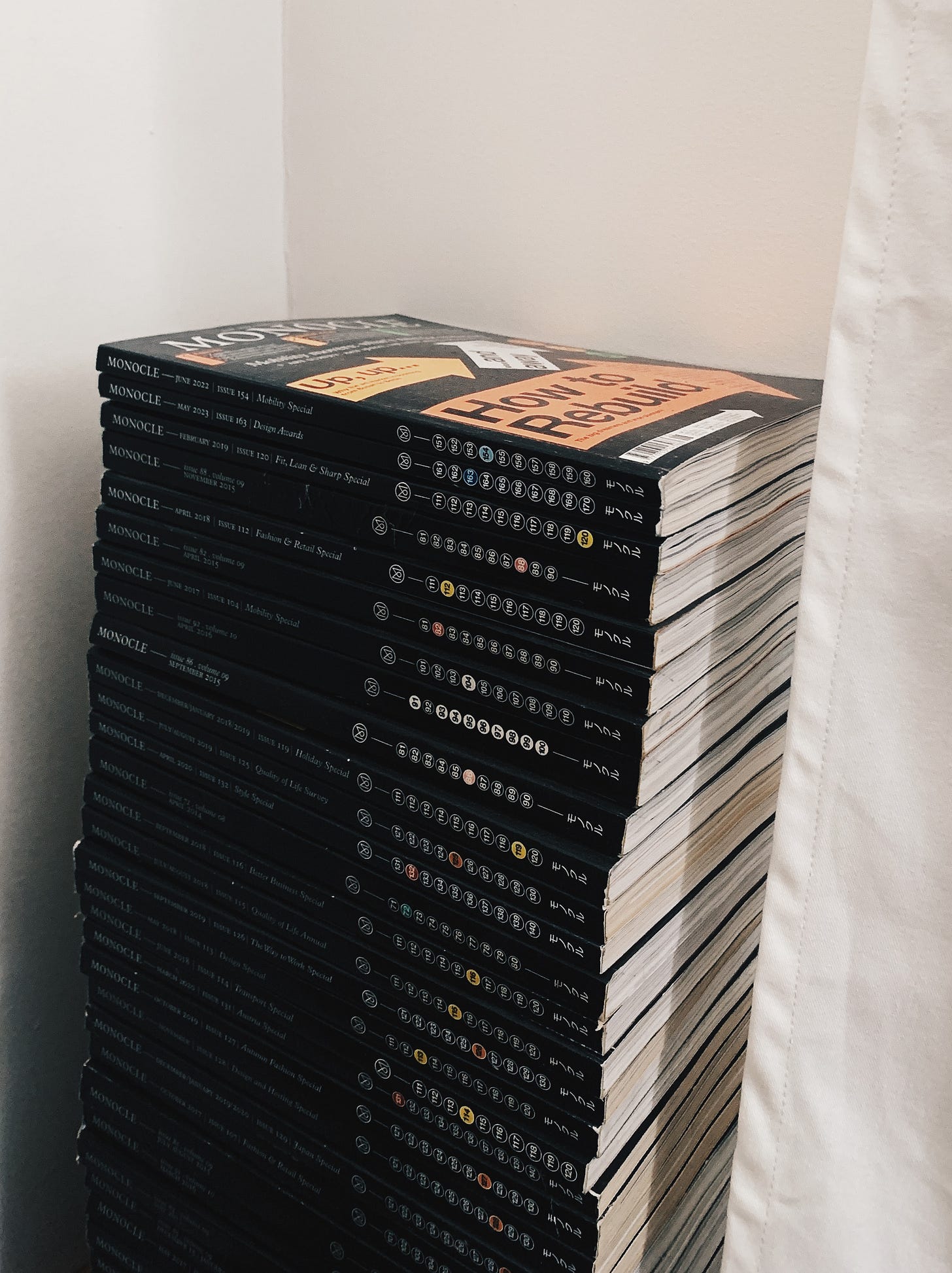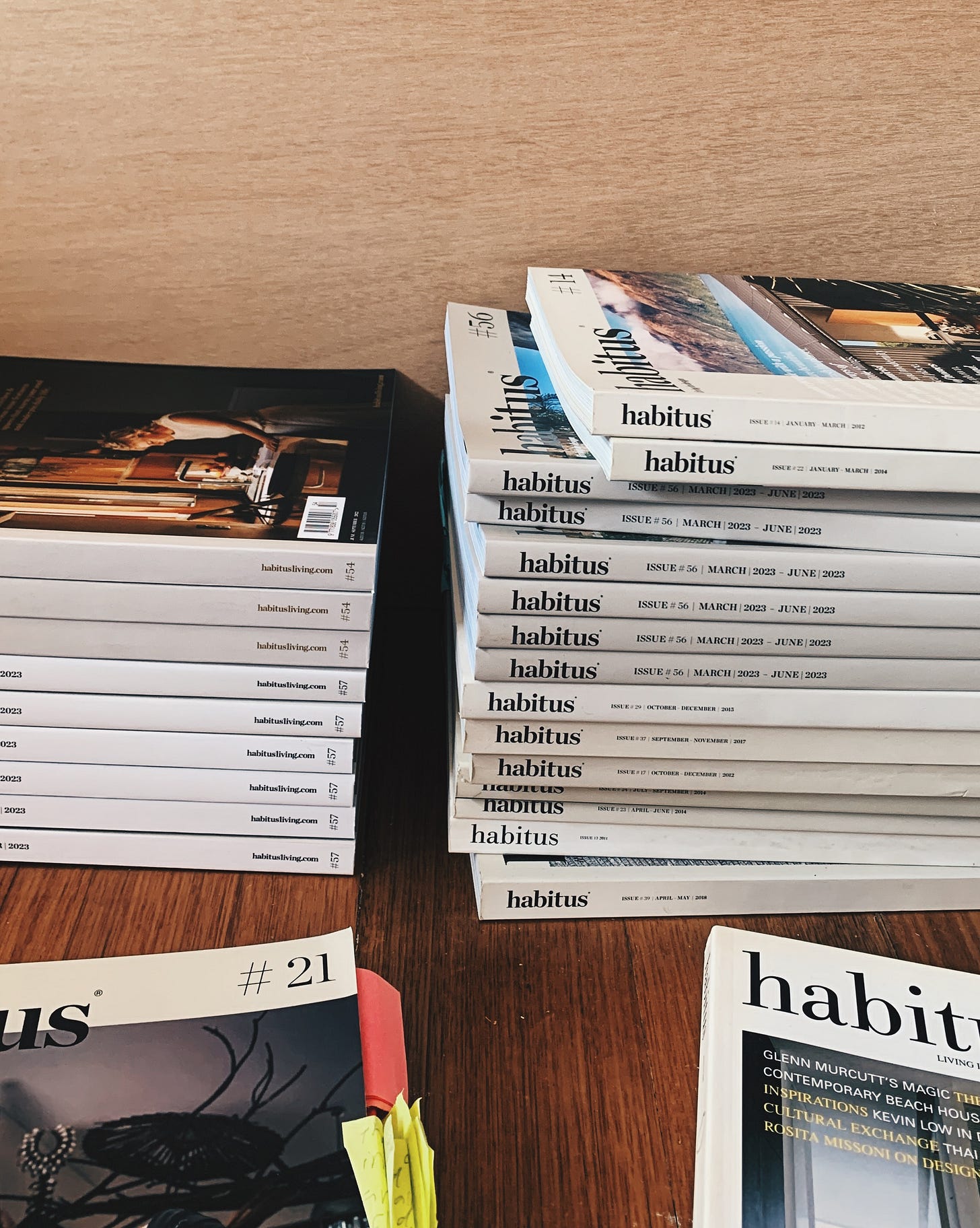Why I decided to leave my dream job as a magazine editor
A few weeks ago, I finished up as the editor of Habitus, there are mixed emotions. So I decided to write through the experience as the first dispatch on A Design Perspective.
Welcome to the first edition of this fortnightly Substack where I’ll be writing on topics ranging from the future of design and architecture, the media, sustainability, and technology. Here goes…
I was an awkward kid. I often spent weekends at home alone inhaling books. By the time I was a tween, it was books and magazines. The shiny, glossy pages were so packed with information, presented with cleverly designed layouts and what seemed like an ever-changing mode to tell stories. While the fascination was there from an early age, I never saw it being a viable career pathway and instead discovered a love affair with design.
But by the time I was studying interior design at university, magazines still held a reverential place in my life. Each payday I would stop at the giant Dymocks in Brisbane CBD (sadly RIP), and stand in front of a wall of publications, riffling through pages looking for something to catch my eye.
After years of collecting, the stacks grew so cumbersome that when I packed up my life to move to London something had to happen. Yet I found myself so attached to these ephemeral tomes it was hard to let them go. Russh was donated to a friend studying fashion. Oyster and special editions were kept and packed up to live in my parents’ shed until some indefinite point in the future.

All of this prelude is to convey just how integral and aspirational magazines have been for me. And yet despite this lifelong adoration, I knew in my bones it was time to take a step back after three years at the helm of Habitus – a publication that I have admired since its very first issue came out.
It’s worth mentioning that I absolutely loved my job. My publisher and CEO trusted my editorial decisions and gave me the freedom to test new ideas, some of which worked and some of which didn’t, but that autonomy helped build my confidence and stretch me creatively.
So if things were so good, why leave? People may or may not agree with me on this, but what I’ve come to recognise is that there is a shelf life to an editor. We’re attuned to curating, selecting and staying on the cusp of what’s around the corner. There is constant thought about the audience and what is of relevance to them. That sifting, sorting and synthesising of information never stops, which is an incredible mental load to carry at times. It’s not to say it isn’t possible to juggle this along with all the other things that life throws at you, in fact, some of the editors I’ve looked up to the most have small children, and they manage it all very successfully.
Where I landed was what felt like being inside a vacuum with an overly tuned Instagram algorithm. The time and space to uncover the gems dwindled. The timelines always compressed, the demands piled up – there was never a chance to step outside of what was immediately on my plate to bring in something fresh or unexpected. I didn’t want my disinterest, my own increasingly shallow pool of ideas, to bring down a brand that deserves more. And given how public and personal every issue and newsletter felt, I didn’t want the quality of my output to diminish as my creativity waned.
Where I landed was what felt like being inside a vacuum with an overly tuned Instagram algorithm.
When we hit send on issue #59 at the end of January, my tenth issue, and in the delirium that comes after each print deadline, I just knew it was time to stop.
So now I hope that in the quietness of post-editor life, inspiration will bubble to the surface, and I will capture it here on A Design Perspective. It’s a space to share the things that have been lurking in my mind for years, many of which have been the topics of lengthy (sometimes salacious) wine-fuelled dinner conversations.
I want this to be a space to put into words many of the things that are openly discussed in the industry but rarely published because of the commercial realities they’re bound by. For instance, the death of true architectural criticism, or the laziness of using ‘longevity’ as a replacement for true sustainability.
This is a project for creative thinking and if that sounds interesting, please subscribe.






Cant wait to see where you go from here
Beautifully written, as always. Looking forward to reading more!